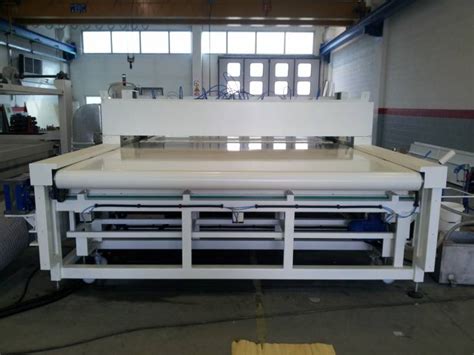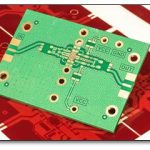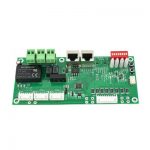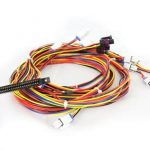What is Curtain Coating?
Curtain coating is an advanced technique used to apply thin, uniform layers of liquid coatings onto substrates at high speeds with minimal material loss. This method involves creating a continuous “curtain” of coating liquid that falls onto a moving substrate below. As the substrate passes through the curtain, it becomes evenly coated on one or both sides.
Curtain coating offers several advantages over other coating methods:
– Very high coating speeds (up to 1000 m/min)
– Precise control over coating thickness and uniformity
– Ability to apply multiple layers simultaneously
– Efficient use of coating materials with little waste
– Versatility to coat a wide range of substrates and liquids
Curtain Coating vs Other Methods
| Method | Max Speed (m/min) | Min Thickness (μm) | Material Efficiency |
|---|---|---|---|
| Curtain Coating | 1000 | 5 | High |
| Slot Die Coating | 600 | 20 | Medium |
| Slide Coating | 300 | 25 | Medium |
| Roll Coating | 800 | 1 | Low |
As shown in the table, curtain coating offers a combination of very high speeds, thin coatings, and high material efficiency compared to other common industrial coating techniques. This makes curtain coating ideal for applications that require high throughput and minimal waste, such as in the production of lithium-ion battery electrodes, photographic films, and flexible electronics.
How Does Curtain Coating Work?
In a curtain coating system, the coating liquid is pumped into a precision coating head which contains a slot die to form the liquid into a stable “curtain.” The geometry of the slot die, flow rate of the liquid, and properties (viscosity, surface tension, density) of the liquid itself must be carefully controlled to maintain a uniform curtain without breaking up into droplets.
As the substrate passes through the falling curtain at high speed, the liquid wets out and adheres to the surface, forming a thin, even coating layer. The coated substrate then passes through a drying oven to evaporate the solvent, leaving behind a solid film. Precise control of the curtain flow rate, coating gap, and web speed allows for accurate tuning of the final coating thickness.
Single vs Multiple Layers
One of the key advantages of curtain coating is the ability to apply two or more distinct layers simultaneously onto the substrate. This is accomplished by feeding different liquids into the coating head, which then form separate “stripes” within the curtain. As the curtain falls onto the substrate, the multiple layers are deposited at the same time without intermixing. This capability greatly streamlines the production of multi-layer coatings compared to sequential coating and drying of each layer.
Low Material Loss
Another major benefit of curtain coating is very high material utilization efficiency, meaning little coating liquid goes to waste. In a well-designed curtain coating setup, over 95% of the coating liquid ends up on the substrate, with only a small amount lost to the coating head, drip pans, or misting.
This low wastage is achieved through careful design of the coating head to maintain laminar flow and minimize turbulence. Precision pumping of the coating liquid to match the web speed ensures a stable curtain with little excess. Solvent evaporation and misting are reduced by enclosing the coating zone and optimizing airflow.
Efficient material usage translates directly to cost savings, especially for expensive active ingredients in applications like battery electrodes or pharmaceuticals. It also minimizes the need for solvent recovery and reduces the environmental impact of the coating process.
Material Utilization Efficiency
| Method | Material Usage |
|---|---|
| Curtain Coating | 95-99% |
| Slot Die Coating | 90-95% |
| Slide Coating | 85-90% |
| Roll Coating | 50-80% |

Challenges and Limitations
Despite its many advantages, curtain coating does have some challenges and limitations that must be considered:
-
Coating Head Design: Achieving a stable, uniform curtain requires careful design and precision machining of the coating head and slot dies. The dimensions must be optimized based on the rheological properties of the coating liquids and the desired coating thickness. Any defects or non-uniformities in the coating head can lead to curtain instability and coating defects.
-
Liquid Properties: Curtain coating works best for liquids within a certain range of viscosity (10-1000 mPa·s), surface tension (20-80 mN/m), and density (0.8-1.5 g/cm³). Liquids that are too thin, too viscous, or have very low surface tension can be difficult to form into stable curtains. Foaming, air entrainment, or suspended solids in the liquids can also disrupt the curtain uniformity.
-
Substrate Limitations: Very porous, rough, or textured substrates can be challenging to coat uniformly with a curtain coater. The high speed of the substrate can also cause air entrainment or boundary layer disruption, leading to coating defects. Curtain coating is best suited for smooth, continuous substrates like foils, films, and paper.
-
Operating Window: While curtain coating can achieve very high speeds, there is a limited operating window for stable coating. The web speed, curtain flow rate, coating gap, and liquid properties must be carefully balanced to maintain curtain stability and coating uniformity. Deviating too far from the optimal settings can result in curtain breakup, air entrainment, or other defects.
Applications
Curtain coating finds use across a range of industries where high-speed, high-precision coating is required:
-
Lithium-Ion Batteries: Curtain coating is used to apply uniform layers of electrode slurries (anode and cathode) onto metal foil current collectors. The high speed and low waste of curtain coating enable cost-effective production of high-performance battery electrodes.
-
Photographic Film: The multi-layer capability of curtain coating is leveraged to produce color photographic films with distinct layers of light-sensitive emulsions and filter dyes. Precise control over the layer thicknesses is critical for optimal film performance.
-
Flexible Electronics: Curtain coating is used to deposit functional layers like semiconductors, dielectrics, and conductors onto flexible plastic substrates for applications in displays, solar cells, and printed circuits. The high speed and roll-to-roll compatibility of curtain coating enable scalable manufacturing.
-
Adhesive Tapes: Various adhesive, primer, and release layers are coated onto backing materials to produce tapes for different applications. Curtain coating allows for efficient production of multi-layer tapes with tailored properties.
-
Pharmaceutical Films: Polymeric drug delivery films, transdermal patches, and wound dressings often require multiple layers with different active ingredients. Curtain coating enables precise deposition and patterning of multi-component formulations.
Frequently Asked Questions
1. What is the maximum coating speed of curtain coating?
With a well-designed curtain coating system and optimal liquid properties, coating speeds up to 1000 m/min (60 km/h) can be achieved. This is much faster than other precision coating methods like slot die (up to 600 m/min) or slide coating (up to 300 m/min).
2. How thin of a coating can curtain coating produce?
Curtain coating can produce uniform coatings as thin as 5 μm in a single pass. Even thinner coatings (<1 μm) are possible by diluting the coating liquid or using a pre-metered slot die. The actual minimum thickness achievable depends on the properties of the coating liquid and substrate.
3. Can curtain coating be used for intermittent patterns?
Curtain coating typically produces continuous coatings across the entire width of the substrate. However, it is possible to create intermittent stripes or patterns by using a segmented slot die or a patterned substrate. The patterning resolution is limited compared to other techniques like gravure or screen printing.
4. How many layers can be coated simultaneously?
Most curtain coating systems are designed for up to 3 distinct layers, as this covers the majority of multi-layer applications. Specialized heads for 4-5 layers are available for niche applications. Beyond 5 layers, the complexity of the coating head and flow instabilities limit practical implementation.
5. What is the typical material utilization efficiency?
With a well-designed curtain coater and appropriate liquid properties, material utilization efficiencies of 95-99% can be routinely achieved. This means less than 5% of the coating liquid is wasted, compared to up to 50% wastage in other methods like roll coating. Minimizing material loss is a key advantage of curtain coating, especially for high-value ingredients.






Leave a Reply